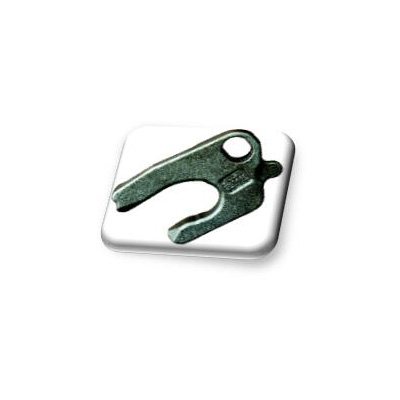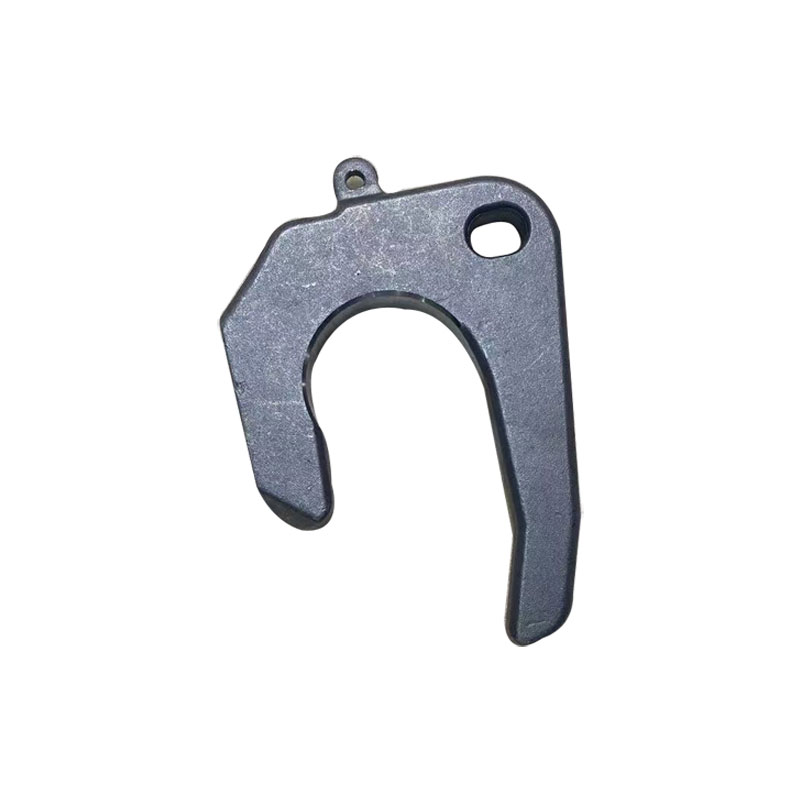Why does the forging surface produce slag?
2022-06-09
The slag on the surface of the forgings is in the process of liquid die forging, part of the coating or oxide scale is squeezed into the surface of the workpiece, which presents wrinkling or oxide slag pitting during the sad fire.
Therefore, the reasons for slag inclusion on the surface of forgings are: too much coating or at the end of the dry solid casting, so that the coating with liquid metal, and some liquid metal action, the formation of compound inclusion. For example, the "hard spot" of high tin bronze is like this; When the punch is pressed, the crystallized hard shell which has been freely solidified is greatly wrinkled and deformed, and the coating and oxide scale are squeezed into the surface layer of the parts.
There is to prevent the surface of the forgings slag trap countermeasures: properly improve the mold temperature, coating must be sprayed evenly, dry solid; The residence time before pressurization should be as short as possible to ensure that the solidified layer is not too thick during pressurization.
Therefore, know the cause of the forging surface slag and prevent countermeasures, you can pay attention to from the beginning, prevent the forging surface slag.
The work step diagram is used to show the shape and size of the billet during billet making and die forging. The process of determining these work step diagrams is called work step design. The billet and die forging groove are designed and manufactured according to the working step diagram.
As mentioned earlier, the most common deforming steps are pier thickness, shoulder, bending, extrusion, pre-forging, and final forging.
Final forging step design: mainly design hot forging drawings, determine the form of burr groove and punching skin shape and size. The forging design is the same as the hammer forging, but the shape and size of the burrs are different.
The final forging of the press is based on the coarse deformation of the pier, and the height size of the forgings is guaranteed by adjusting the stroke of the forging press, rather than relying on the upper and lower die surface. In order to prevent the dull car, when the slider is down, there should be a certain gap between the upper and lower parting surfaces to adjust the closing height of the die, and can reduce the frame elastic deformation, to ensure the dimensional accuracy of the height direction of the forging. Because of these two reasons, it is required that the die forging of crank press adopts a more perfect blank working step. Therefore, in press forging, burr resistance is also relatively reduced, mainly to drain and accommodate excess metal. Therefore, burr groove bridge and warehouse height is correspondingly larger than the hammer forging。


Therefore, the reasons for slag inclusion on the surface of forgings are: too much coating or at the end of the dry solid casting, so that the coating with liquid metal, and some liquid metal action, the formation of compound inclusion. For example, the "hard spot" of high tin bronze is like this; When the punch is pressed, the crystallized hard shell which has been freely solidified is greatly wrinkled and deformed, and the coating and oxide scale are squeezed into the surface layer of the parts.
There is to prevent the surface of the forgings slag trap countermeasures: properly improve the mold temperature, coating must be sprayed evenly, dry solid; The residence time before pressurization should be as short as possible to ensure that the solidified layer is not too thick during pressurization.
Therefore, know the cause of the forging surface slag and prevent countermeasures, you can pay attention to from the beginning, prevent the forging surface slag.
The work step diagram is used to show the shape and size of the billet during billet making and die forging. The process of determining these work step diagrams is called work step design. The billet and die forging groove are designed and manufactured according to the working step diagram.
As mentioned earlier, the most common deforming steps are pier thickness, shoulder, bending, extrusion, pre-forging, and final forging.
Final forging step design: mainly design hot forging drawings, determine the form of burr groove and punching skin shape and size. The forging design is the same as the hammer forging, but the shape and size of the burrs are different.
The final forging of the press is based on the coarse deformation of the pier, and the height size of the forgings is guaranteed by adjusting the stroke of the forging press, rather than relying on the upper and lower die surface. In order to prevent the dull car, when the slider is down, there should be a certain gap between the upper and lower parting surfaces to adjust the closing height of the die, and can reduce the frame elastic deformation, to ensure the dimensional accuracy of the height direction of the forging. Because of these two reasons, it is required that the die forging of crank press adopts a more perfect blank working step. Therefore, in press forging, burr resistance is also relatively reduced, mainly to drain and accommodate excess metal. Therefore, burr groove bridge and warehouse height is correspondingly larger than the hammer forging。


X
We use cookies to offer you a better browsing experience, analyze site traffic and personalize content. By using this site, you agree to our use of cookies.
Privacy Policy



